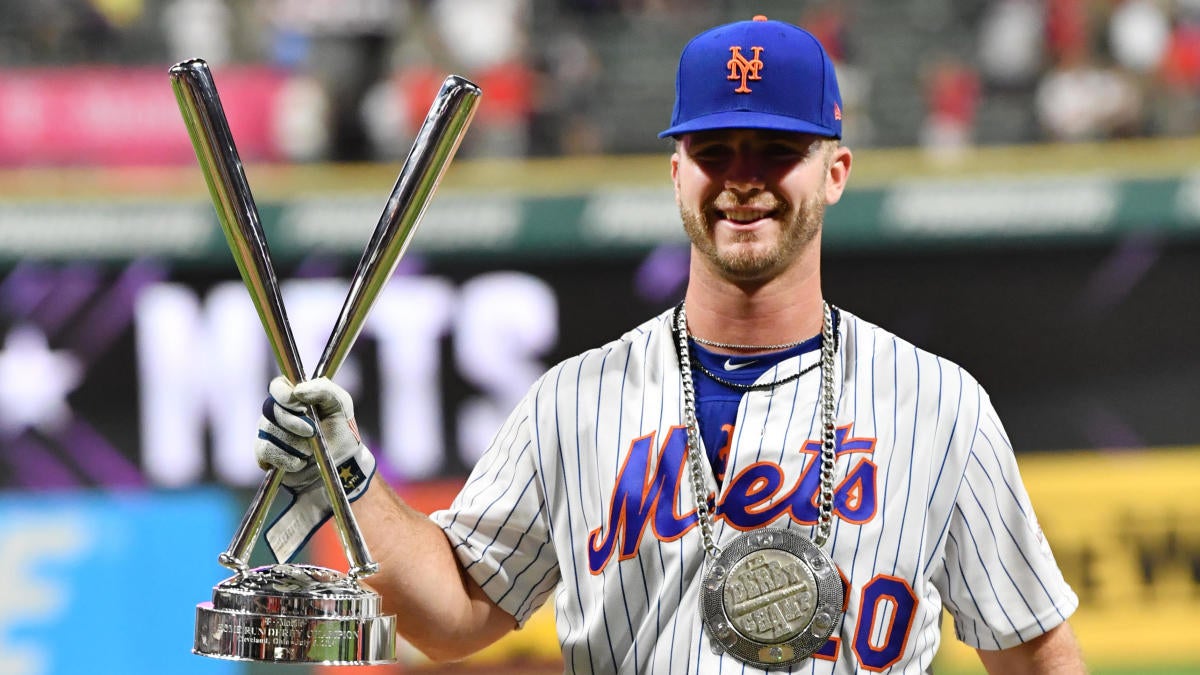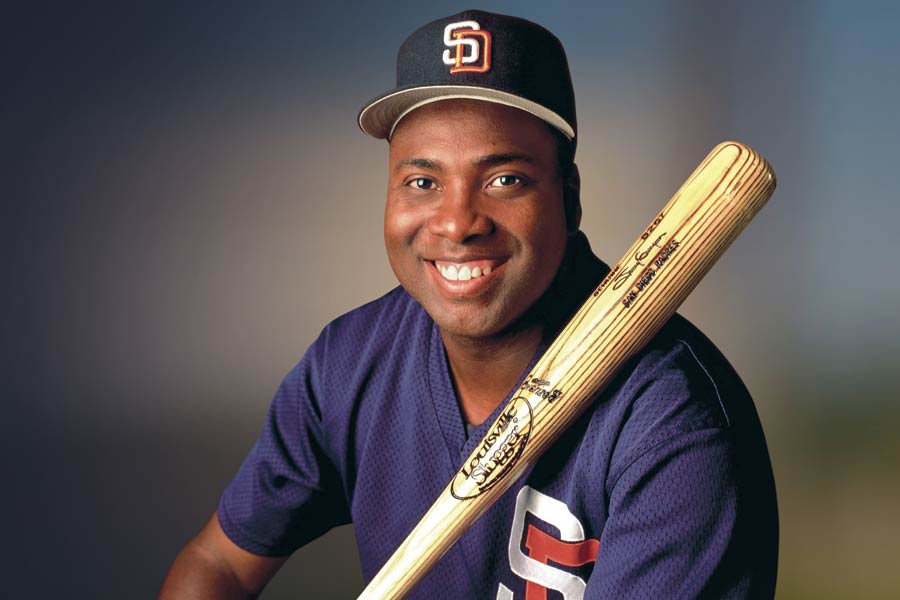There’s an old saying that it’s easy to play armchair quarterback. The same thought really applies to baseball as well. For those fans sitting at home who watch another team’s player blossom upon arriving in the big leagues it’s very easy to grumble out loud about how the front office has failed in its mission to find the best talents, and “If I’d been the one in charge you can guarantee every guy I’d select would become a star!”
Ummm, no, that’s not exactly true. Hitting a baseball remains one of the toughest acts in sports. Forget the velocities, the arm angles, the control and the preparedness of the batter. Recognize that a Major League Baseball player in 2019 in the National League averaged just .251 when swinging the bat. That means nearly 75% of the time when he went to the plate he failed at his mission. Now there are small ball advances like hitting behind the runner that can be productive to advance a guy from one bag to the next, but hitting a baseball against a professional pitcher is an incredibly difficult skill to master.
Towards that end, you might grimace (as I often do) when a team goes after guys with high batting average and low strikeout percentages in their high school, college and independent careers. The logic makes some sense. After all, if a guy is making strong contact, then it’s entirely possible as the grade of pitching he faces improves he’ll still be able to get the bat on the ball.
Of course, to hear many fans talk about it, the only way to go in drafting is power bats and power arms. There’s some merit there, too. Look at the one man show put on by Pete Alonso in 2019. Every time he came to the plate it was a “stop what you’re doing” moment to see if he was going to crush another one. A lot of folks focus only on the home runs (including winning the All Star Game’s Home Run Derby) without recognizing the equally ignominious feat of driving home 120 runs with only a .260 average.
When I was growing up there were two absolute studs at making contact, one in the AL and one in the NL. For the Minnesota Twins and California Angels you had Rod Carew handling the bat with rare skill, hitting .328 for his entire career, earning a berth on the All Star Team every single year of his career with the exception of his final season at age 39 when he “only” hit .280, an average many players would kill to get.
On the NL side of the ledger was the incomparable Tony Gwynn of the San Diego Padres. For his career he hit ten points higher than Carew, finishing with a .338 average. Carew managed to hit double digits in HRs twice. Gwynn did it five times (including his age 39 season when he hit -- you guessed it -- .338). He once even tallied 119 RBIs in a season for a guy with just 17 HRs, though the .327 AVG had to help a lot. He ranked only 6th in the MVP voting that year because Coors Field aided Larry Walker hit 49 HRs, drove in 130 and hit .366. (By the way, some schlub on the Dodgers named Pizza PIe or something like that was 2nd in the voting!)
As Tom Glavine once said famously in a Nike commercial on TV that “chicks dig the long ball,” apparently now so too do General Managers. You see a great emphasis on home run hitters just as you see the priority in finding rocket throwers who can blow the ball past them. The idea of small ball has pretty much fallen by the wayside.
As a Mets fan you have seen a great many of those high contact hitters come and go without much success. Recently that would include folks like Phillip Evans, T.J. Rivera, Wilmer Flores and others. The best of the lot, of course, has turned out to be late bloomer Jeff McNeil who waited until age 26 to make his big league initiation, but he’s proven to be even better here than he was in the minors. The issue is that those types of guys are few and far between.
To hear the fan base talk about it, they want to see more hit like Pete Alonso and fewer hit like Pete Schourek. Even the middle of the pack stars like Michael Conforto are embraced more than singles hitters like Edgardo Alfonzo whose popularity only soared after he started putting the ball over the fence. It would seem to me that contact hitters vs. power hitters is not a one or the other choice. Your odds of winning either way are pretty slim. And people will complain no matter who you draft.




Reese well said. Especially the line "people will complain no matter who you draft."
ReplyDeleteThere were 6,776 reasons why MLB hitters batted just .251 - called home runs.
ReplyDeleteNBA fans love resounding dunkers, rare back in the Willis Reed days. Baseball now loves HRs over small ball fundamentals for the same reason - instant adrenaline excitement.
The Mets in the late 1970s-early 1980s had a 6 year stretch where they averaged just 80 HRs - and didn't hit either. Hopefully those days will never return in my lifetime.
I do not have a problem drafting great hitters with great D and good speed if they don't yet have big power but can project out to also have as much, or more, power than Brandon Nimmo. First rounder Gavin Cecchini did not meet that standard.
TJ Rivera was a lot like McNeil - fine hitter, low power but upped it - sadly, his TJS screwed his career in what was a surprisingly strong ascendancy.
Rod Carew and Gwynn types are exceptional talents but an extraordinarily rare breed, sadly. How rare? In 60 years, the Mets might have ONE of them in Jeff McNeil.
I just wonder where the Lance Johnsons and Vince Colemans have gone. Those guys both had a number of superior years based on raw speed and decent to strong hitting ability, but I have no idea where they have all gone.
I "discussed" this non-hitter draft pick stuff with John from Albany yesterday - to draft a questionable, low power bat like that of 3rd round # 84 Milton Ramos (or my frequent example 4th round, 4 doubles and 0 HRs in 600 PAs Branden Kaupe) is just a stupid waste of valuable draft picks. Hitters who can't hit don't make the majors any more - the days of Bud Harrelson or even Rey Ordonez are over.
Most of the first round busts of the Mets over the years (at least half) in a look-back largely looked like flawed, overrated players without power arms or power bats.
All 5 Mets picks, in my opinion, should be power arms and power bats.
Lastly, John Christenson was the Mets pick before Tony Gwynn was passed on - sometimes I wonder if the Mets' selections over many years were as poor as they were due to avoiding drafting talented African American players like Gwynn, who went 20 slots after bust Christenson. Thankfully, those days seem long gone.
Most MLB highlight video each day, when they actually play games, are of home runs.
ReplyDeleteIf I could construct a team it would always be in the image of our 86 team. 1-3 of Mookie/Dykstra, Backman and Kieth would be my small ball, speed and contact way to go.
ReplyDeleteAgree Zozo. The 86 team had the perfect balance of speed. power. and fundamentals. Did you catch any of the Bookyln games that Fonzie managed last year? Tremendous speed and fundamentals and they led the league in defense, won the league championship, and did not feature any top prospects until the playoffs. (Sorry won't let it go.)
ReplyDeleteZozo and John, the trick is actually getting guys like that. Since the 1980s, how many Dykstras and Mookies have they developed out of the draft? Crickets.
ReplyDeleteTom,
ReplyDeleteI really thought Champ Stuart had a chance. He stole 40 bases in 2016 and 39 bases in AA in 2017. However, he never hit more than .222 in AA. When ever I saw him in games, he seemed to hit a lot of fly balls. I hope someone didn't tell him he needed more power and he played to a weakness. Ideally a player like that should hit line drives and balls on the ground. If the TJ Riveras and Phillip Evans of the world could run like Champ they would have been all world.
It is so easy to go all arm chair about this process.
ReplyDeleteThe draft process is designed to find 'a few good men'. I'm reminded about the parents I met in the Savannah Sand Gnats stands that asked me if I thought their son would be a star shortstop in the game. I never really answered the question. What was I supposed to say? There are millions of people playing this game and 30 will be starting shortstops?
You can't be critical and be an arm chair quarterback about this practice. And you definitely can't be critical of arm chair quarterbacks by being one yourself.
I love the process.
John, Champ Stuart's big problem was huge K rates. I had wondered, in an article once, if it might have helped him to realize that as a fatal career obstacle and look at video of fast guys like Matty Alou who put the ball on the ground in play and with bunts, and never struck out, and try to emulate their style.
ReplyDeleteI just wonder with Stuart if they considered his contact rate enough at draft time.
One draft time analysis on Stuart said this: he has very poor pitch recognition and plate discipline, resulting in a strikeout rate of almost 21%. Even bad breaking balls are enough to fool him, and trust me, he doesn’t see many good breaking balls in Division II...his swing...would require a swing overhaul. He’d probably be best served by keeping the simpler swing and learning to put the ball on the ground, where he can use his speed to its full effect, but right now Stuart just frustrates his coaches by hitting balls in the air.
I think, given his great speed, he was worth the gamble. I just wonder if they ever tried to fix him.
Nice piece. For years I never cared that much about scouting and development. When I got interested about 15 years ago, on a whim I went to a AA game in New Britain and pretended I was there as a scout. Doing that for a few innings gave me a small insight into what was involved, and a lot more respect for those who do it for a living.
ReplyDeleteNice Post!!
ReplyDeleteHERE, YOU CAN GET SOME TIPS TO MAINTAIN GOOD ORAL HYGIENE